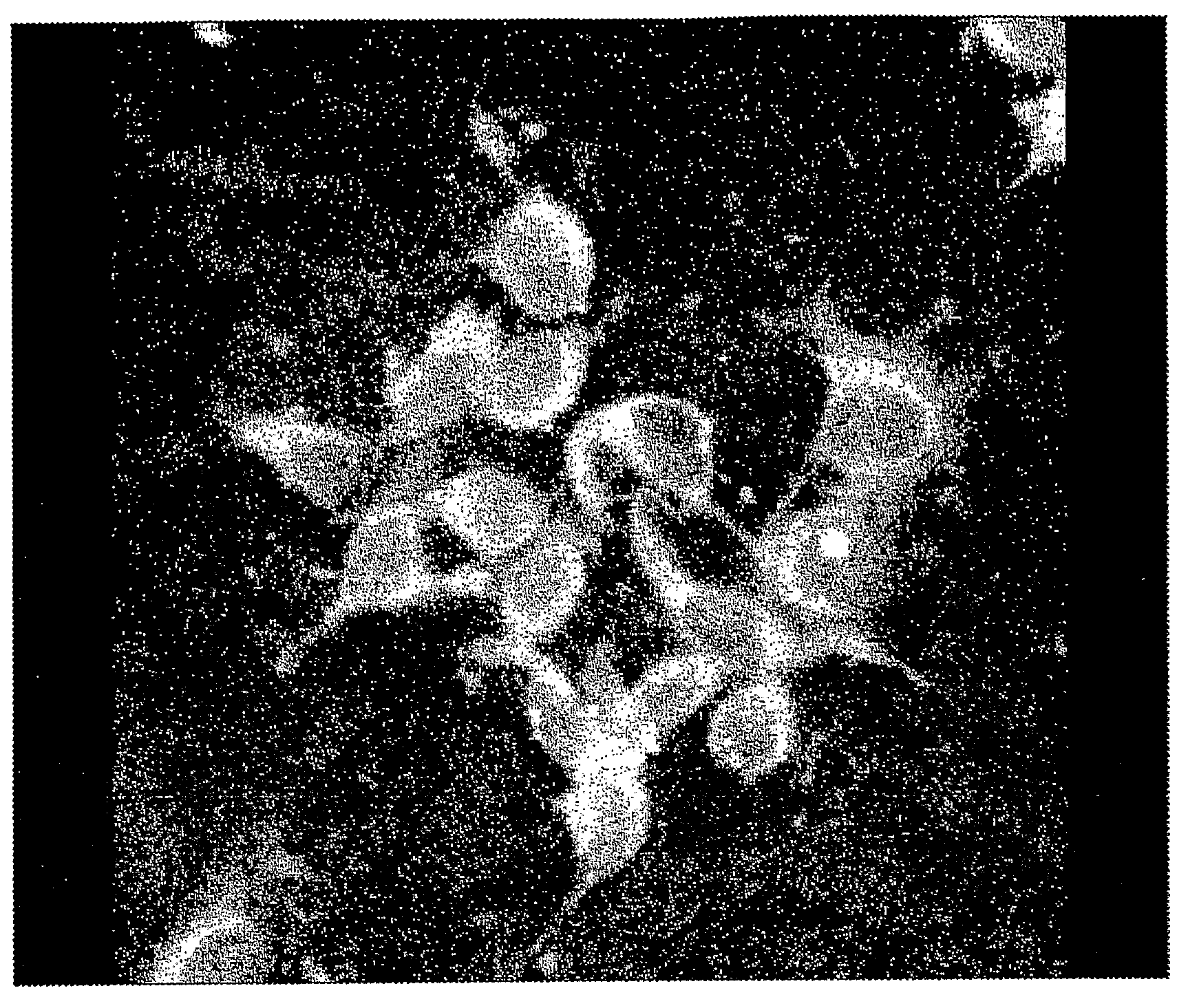Biological materials and uses thereof
a biomaterial and photodynamic technology, applied in the field of photodynamic therapy, can solve the problems of damaged antibody proteins, poor photosensitizer, hydrophobic nature of photosensitizers,
- Summary
- Abstract
- Description
- Claims
- Application Information
AI Technical Summary
Benefits of technology
Problems solved by technology
Method used
Image
Examples
example 1
Preparation of an Anti-Her 2 scFv
[0158]1. A chosen, well characterised, anti-cancer scFv for example c6.5 (anti-Her2) was PCR amplified and cloned as an Nco I / Not I fragment into the bacterial expression vector (e.g. pET20b, Novagen) to create pETC6.5scFv (FIG. 3).[0159]2. The vector pETc6.5scFv was transformed into E. coli BL21 (DE3) (Novagen) by the calcium chloride method (Sambrook et al, 1990) and plated onto 2TY agar plates containing 100 mg / ml ampicillin (Sambrook et al, 1990). Single colony transformants were picked and re-streaked onto fresh 2TY Agar plates containing ampicillin.[0160]3. A single colony was picked and grown in 5 ml of 2TY media containing 100 mg / ml ampicillin at 30° C., in a shaking incubator (250 rpm) for 8-16 hr. This culture was then used to inoculate a culture of 500 ml 2TY media containing 100 mg / ml ampicillin and grown under similar conditions for a further 3-16 hr.[0161]4. The culture supernatant was harvested and concentrated using an Amicon ultrafil...
example 2
Preparation of PPa Succinimidyl Ester (FIG. 5)
[0164]1. To a light protected solution of the pyropheophorbide a (50 mg, 0.094 mmol) in a mixture of dry DCM / THF (9:1) N-hydroxysuccinimide (12.9 mg, 0.11 mmol) was added followed by dicyclohexylcarbodiimide (DCC) (23.2 mg, 0.11 mmol).[0165]2. After stirring for 12 h, the precipitated dicyclohexylurea was filtered off and the solvents removed. The crude product was taken up in a small volume of chloroform and precipitated by the addition of hexane. The precipitate was collected, washed well with hexane and the resulting crude product purified by column chromatography on silica gel eluting with 2% hexane in ethyl acetate (Rf 0.66).[0166]3. The isolated product was recrystallised from DCM / hexane to give pure pyropheophorbide a succinimidyl ester (1) in 70% yield. MS (FAB+) 631 (M+, 100%)[0167]4. A stock solution of C6.5 scFv at 500 μg / ml was defrosted at room temperature and 200 μl added to 706 μl of PBS. Acetonitrile (60 μl) was added to ...
example 3
Conjugation of c6.5 scFv to PPa—Solvent System 1
[0168]1. Pyropheophorbide a succinimidyl ester made up in 100% DMSO was then added (34 μl) from a stock solution of 1.58 mM to the C6.5 scFv with continuous stirring (to give 16 equivalents of PPa). The mixture was kept on ice and in the dark, with stirring for 30 mins, after which time the solution was placed in dialysis tubing and dialysed against 5 L of PBS at 4° C. overnight in the dark.[0169]2. Each sample of the conjugate was placed in a quartz cuvette and an absorbance profile was run against a blank containing PBS (FIG. 6). The absorbance value at 410 nm was measured and the concentration of PS in g / ml was determined by comparing to a standard curve of PPa.[0170]3. For example, if the concentration of PPa found in the coupling reactions was 0.0000159 g / ml. The number of molecules of PPa in 0.0000159 g / ml was 1.4×1016. The number of molecules of C6 in 100 ug / ml was 2×1015. The ratio therefore of PPa:C6.5 was 8:1.
PUM
| Property | Measurement | Unit |
|---|---|---|
| Temperature | aaaaa | aaaaa |
| Temperature | aaaaa | aaaaa |
| Fraction | aaaaa | aaaaa |
Abstract
Description
Claims
Application Information
 Login to View More
Login to View More - R&D
- Intellectual Property
- Life Sciences
- Materials
- Tech Scout
- Unparalleled Data Quality
- Higher Quality Content
- 60% Fewer Hallucinations
Browse by: Latest US Patents, China's latest patents, Technical Efficacy Thesaurus, Application Domain, Technology Topic, Popular Technical Reports.
© 2025 PatSnap. All rights reserved.Legal|Privacy policy|Modern Slavery Act Transparency Statement|Sitemap|About US| Contact US: help@patsnap.com



